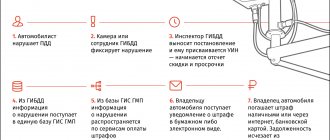How to check alcohol concentration
In practice, only three methods are used to determine the amount of alcohol in the human body.
- Breath test - the gas mixture exhaled from the lungs is passed through a breathalyzer. The device quickly records the concentration of ethanol in it. The test results are quite accurate.
- A urine test is the simplest option with a reliable result. For accurate measurements, you need to follow the rules for collecting urine, storing it, and transporting the material to the laboratory as quickly as possible.
- Blood testing is another reliable method with minimal error. Requires the intervention of a qualified physician - blood is taken from a vein for examination. Failure to follow the basic principles distorts the results.
The level of ethyl alcohol that is permissible for drivers varies in different countries, but there is a natural content - up to 0.35 ppm. This value serves as a general guideline. This indicator can be found in a non-drinker who has not consumed alcohol - after drinking kefir, kvass, or lactic acid products. This level is not taken into account as a state of alcoholic intoxication, and the figures above indicate that the person took drinks “with a degree”. At the same time, the first indicators of intoxication, initial changes in the functioning of the nervous system are observed at a concentration of 0.5 ‰ and higher.
Drivers can quickly determine how long to wait after drinking alcohol using the table below.
What does ppm mean?
The content, or concentration of alcohol in the bloodstream in the international system is designated as BAC (Blood Alcohol Concentration) and is measured in ppm. Promille (‰) indicates the concentration of ethanol in milliliters per 1 liter of blood. In other words, this is the ratio of the volume of alcohol and blood in the body. For example, a result of “0.4 ppm” indicates that 1 liter of blood contains 0.4 ml of pure alcohol.
But “naked” numbers mean nothing to most people. The exception, perhaps, is drivers. They certainly know that 0.4 ppm in the blood means problems with the police. According to the 2021 rules, the driver’s blood cannot exceed 0.35 ‰ ethanol, and the alcohol concentration in the exhaled air must not exceed 0.16 ‰. By the way, the ppm indicator is affected not only by alcohol, but also by some products. For example, non-alcoholic beer, kefir, kvass, yogurt, yogurt, rye bread sandwiches, overripe bananas and even cigarettes, although they will not affect the level of sobriety, can have a noticeable effect on blood alcohol levels (especially against the background of a small portion of alcohol already taken).
Alcohol withdrawal duration table
The first two lines and the left column show the volume of drink and the person’s weight. The remaining cells show the time (in hours) that alcohol remains in the blood. This is average information calculated for forty percent vodka and five percent beer. When you drank something else, it is necessary to make adjustments, which will be discussed later.
| Weight in kilograms | Vodka | 50 ml | 100 ml | 150 ml | 200 ml | 250 ml |
| Beer | 1/2 l | 1 l | 1.5 l | 2 l | 2.5 l | |
| Up to 60 kg | 3 | 7 | 10 | 13 | 16 | |
| 60-70 kg | 3 | 6 | 8 | 11 | 14 | |
| 70-80 kg | 2 | 5 | 7 | 9 | 12 | |
| 80-90 kg | 2 | 4 | 6 | 8 | 10 | |
| 90-100 kg | 2 | 4 | 6 | 7 | 9 | |
| 100 kg and more | 2 | 3 | 5 | 7 | 8 | |
Note: These figures are based on middle-aged gentlemen. In women, the process of recycling ethyl alcohol is slower, so on average you need to add sixty minutes to the time indicated in the table.
Calculation algorithm
A hangover or intoxication complicates the calculations, so we explain the principle using two examples.
Example one
How long will it take for half a bottle of “white” to be eliminated from the body of a man weighing 95 kg?
Algorithm
- We are looking for a string with the required weight. This is the line “90-100 kg”.
- Convert half a bottle to displacement. The volume of one bottle is half a liter, which means half is 250 ml. We are looking for such a quantity in the columns.
- At the intersection of the line and column we look at the number - nine o'clock. After this period of time, the guy can drive the car.
Example two
The girl drank four small cans of beer. The girl's mass is 74 kg. How long after the tester does not record a single ppm?
Algorithm
- 74 kg is a weight between 70 and 80 kg, so we need the third line of the plate.
- One small aluminum can is 0.33 liters. We multiply this volume by four, we get 1.32 liters, that is, the third column.
- At the intersection we look at the result - seven hours. This is a male indicator, for a girl we remember the note and add another hour. Total: the tester will not record anything after eight hours.
How to quickly remove alcohol?
If you need to quickly get rid of ethanol in your body, it is recommended to seek medical help. A dropper with glucose and a saline solution will help the alcohol “come out” much faster. However, if there is no desire to go to drug treatment, you can get by with “home” remedies. Here are steps to cleanse your body of alcohol yourself.
- Taking activated carbon. The tablets should be taken before breakfast - 1 tablet per 10 kg of weight (for example, 7 tablets for a weight of 70 kg).
- Cold and hot shower. This method will eliminate the main symptoms of a hangover. Coupled with a subsequent walk in the fresh air, this measure is even more effective.
- A cup of tea. A cup of strong tea in the morning has an excellent diuretic effect. Tea can be replaced with chamomile infusion.
- Eating porridge. The morning after a party with alcohol, you should force yourself to eat rice porridge without any additives (salt or spices). Rice will act as an absorbent.
- Visit to the bathhouse. The purpose of this exercise is to force toxins to come out through sweat. However, you need to be careful: such passive cleansing creates a load on the cardiovascular system, which is already in a deplorable state after drinking copious amounts of alcohol.
Rather than solving the problem of excess alcohol in the blood, it is better to prevent it. The motorist will not have to look for information about how much alcohol is leaving the body if he promptly remembers what kind of driving he is doing and refuses to take it “on the chest.”
Conversion of various alcohols into vodka and beer
If the volume of alcohol you drink differs from five or forty, it is difficult to use the first scheme. It is required to convert the drink into conditional vodka using a special coefficient.
Table 2. Conversion of drinks to vodka
| Name | Rum | Tequila | Absinthe | Cognac | Whiskey |
| Coefficient | 1,5 | 1,125 | 1,75 | 1,125 | 1,25 |
Explanation
The number depends on the degree of consumption and the presence of fusel oils and tannins, which slow down and complicate the elimination of alcohol. That is why, with the same strength of vodka and cognac, the latter “dissipates” longer.
Table 3. Conversion of low-alcohol drinks to beer volumes
| Name | Kvass vigorous | Wine | Strong beers | Vermouth | El |
| Coefficient | 0,24 | 2,4 | 1,6 | 3,6 | 0,72 |
Explanation
The added factor depends on the sugar content and strength of the particular drink.
How to use tables 2 and 3
To calculate the amount drunk, you need to multiply the volume of the drink by the number indicated on the plate. After this, you can use the first diagram, from which it will become clear when you are allowed to drive.
How to calculate correction factors
If you drink a drink that is not on the lists above, you can convert it to conditional alcohol yourself. Example of calculation: degrees of vodka - 40%, dark rum - 60%. Dividing these numbers, we get the required number: 60/40. The answer is 1.5: 1 liter of rum is equivalent in level of intoxication to one and a half liters of vodka, and half a liter of rum is 0.75 liters in vodka equivalent.
In the North Caucasus they love mulberry - a tincture made from mulberry fruits. Mulberry strength is 75%. Converting to vodka equivalent: 75/40. The answer is 1.875. Every 100 g of mulberry is equivalent to 187.5 g of “white” mulberry. Using the alcohol withdrawal label, we understand that after consuming this amount, you can drive a car on average after seven hours. Take your own weight into account in your calculations - the result will be more accurate.
A similar algorithm for intoxicating types and low-alcohol cocktails. Look at the number of turns on the bottle or can, divide the number by five. For example, we drink strong craft beer or a cocktail with a speed of 10 degrees. We calculate the value: 10/5. We get a coefficient of two: one can of strong hops or cocktail is equivalent in degree of intoxication to two cans of “average” beer. If you drank three half-liter cocktail jars, then multiply the three by the correction factor, we get 6. Convert to liters, it comes out to three. We look at the time of elimination from the body - from nine hours for men, from ten for women. A more accurate determination requires taking into account body weight.
Tables for the removal of alcohol poisons from the driver’s body
It is necessary to get behind the wheel of a car, being completely confident in your own sobriety. It should be noted that the highest concentration of alcohol is reached in the body approximately 1-1.5 hours after consuming the first dose.
Alcohol is excreted from the body at a rate of 0.08-0.15 ppm per hour. Average statistical figures that will help the driver calculate the timing and navigate are given below.
Photo: time of complete breakdown of ethanol in the blood in men
Photo: rate of breakdown of alcohol in the blood in women
The duration of elimination of ethyl alcohol can only be determined approximately: too many parameters affect this indicator. However, knowledge of even approximate values can provide invaluable assistance to the driver.
Having information will help you avoid the troubles that come with driving while intoxicated.
What is the accuracy of the calculations
Table methods, calculators on the Internet - theoretical methods based on average statistical measurements. The time for complete withdrawal is individual and may vary even for the same person. Factors influencing sobering up:
- health status;
- degree of fatigue;
- psychological and physical condition;
- taking medications;
- drinking speed;
- air temperature;
- metabolic rate;
- age - in boys, girls and old people, elimination is slower, toxins are more active than in middle-aged people.
The tabular data is not a complete guarantee that in a specific time the “degree” will completely disappear and the breathalyzer will show zero values. This is more of a recommendation to help you figure out when to get behind the wheel and how long it will take to sober up.
A breathalyzer will help you find out exactly whether you can go on the road: a value of 0.16 mg or lower for each liter of exhaled gas mixture allows you to drive without the risk of receiving a fine. Sixteen hundredths of a milligram in ppm equals 0.34 ‰.
The rate of elimination of the breakdown products of ethyl alcohol depends on the rate of intoxication: a person who gets drunk faster is more likely to sober up more quickly. To be completely sure, it is better to add one or two hours to the table data before driving.
Time to remove alcohol from the body
The degree of exposure to alcohol is determined by the volume of alcohol consumed, the strength of the alcohol and the characteristics of metabolic processes. The human body perceives alcohol as poison, so it immediately tries to get rid of ethanol: the absorption and breakdown of the substance occurs simultaneously.
- Individual pension capital - formation procedure
- Insurance of the funded part of the pension
- How to choose a delicious watermelon
Alcohol penetrates tissues and organs through the circulatory system. The brain and liver suffer the most. The process involves the lungs, skin and kidneys.
The rate of alcohol withdrawal depends on the gender of the driver.
For women, the parameter is 0.1 ppm/hour, men sober up faster - 0.1–0.15 per hour.
Criteria that influence the timing of alcohol withdrawal:
- Health, age, gender . A sick person, women or older drivers take longer to sober up. A young and strong male motorist will get rid of ethanol and get behind the wheel sooner than a woman over 40 years old.
- Liver . The condition of the gland determines the time of splitting and weathering of alcohol. The better the organ functions, the faster sobering occurs and the fewer signs of hangover.
- Emotional background . When excited, the body produces adrenaline, which inhibits the elimination of alcohol.
- Method of drinking alcohol . If you drink in small doses and intermittently, the intoxication will be mild, without side effects.
- Amount of food consumed . When a person snacks or eats before drinking alcohol, ethanol takes longer to enter the bloodstream.
- Physical state . The level of fatigue determines the time of intoxication.
How long to wait before a secure check
The question of how much time should pass from the moment of the feast does not have a clear answer for everyone. Permille standards have changed in recent years in Russia. The acceptable limit today is completely zero, but a small error of 0.3 ppm is not a reason to punish drivers. The amendment was adopted due to medicines that may contain ethanol, devices that distort the value and have errors. The threshold concentration is 0.16 mg of alcohol per liter of exhaled air, in the blood - 0.34 ppm. This is enough to avoid fines for drivers taking medications, but you cannot drink anything stronger than kvass before the road.
Below are the experimental data. In it, a fifty-year-old man weighing 75 kg drank various drinks, and after a while measurements were taken with a tester. The ppm level is at the intersection of columns and rows. The values at which you can drive are highlighted in red.
| Hours after consumption | Beer, 3 liters | Vodka, 0.33 liters | Wine, two bottles. | Vodka, one bottle. |
| 12 | 0,48 | 0,39 | 0,51 | 0,68 |
| 13 | 0,44 | 0,27 | 0,41 | 0,61 |
| 14 | 0,27 | 0,16 | 0,32 | 0,54 |
| 14,5 | 0,00 | |||
| 15 | 0,14 | 0,23 | 0,48 | |
| 15,5 | 0,00 | |||
| 16 | 0,18 | 0,35 | ||
| 17 | 0,11 | 0,21 | ||
| 17,5 | 0,00 | |||
| 18 | 0,11 | |||
| 18,5 | 0,00 |
According to this scheme, it is obvious: an additional hour of waiting is enough to significantly reduce the breathalyzer readings.
What to do?
You can speed up the removal of alcohol from the blood: methods are based on increasing metabolism. However, it will be possible to reduce the time to complete “zeroing” only slightly – up to half an hour. Interestingly, people who regularly drink small doses of alcohol sober up faster: the liver copes with breakdown products at a higher rate than in a person who drinks rarely. What will help speed up the process?
- Active physical activity, cheerful and energetic exercises.
- Sauna or steam bath, if there are no contraindications: high blood pressure, heart problems, chronic diseases of the blood vessels. Drinking after bath procedures is prohibited; only water or weak tea is acceptable.
- Thiamine, ascorbic acid, found in fruits.
- Minerals from pharmaceutical complexes, vegetables.
- Dietary foods that help the liver, eliminating fried, fatty, and sweet foods from the diet.
- Drink plenty of clean water, herbal infusions, milk, if the stomach and intestines take lactose.
- Breathing exercises, deep breaths, quitting smoking.
- Walking walk, contrast shower.
After such measures, carry out a test with a device - only it will give you confidence in the zero alcohol level. Please note that such measures help remove alcohol, but do not affect the appearance of the smell of fumes.
How long does it take for wine to evaporate?
To average the indicators, a table is used for the period of wine weathering from the body, which allows you to calculate the approximate time.
Comparative table of the weathering period of alcohol of different drinks
Depending on gender and body weight
A person’s gender and weight are the main factors that influence the period of alcohol elimination. For women and men, these indicators differ (measurements are based on 200 grams of a semi-dry drink with a total strength of up to 12%).
Table for calculating the weathering time of wine for women.
The table shows how much wine evaporates in men.
Depending on the drink category
White and red wine
Dry white wine has the same nutritional value as red wine. However, there are still differences. White wine has less calories (121 kcal), therefore the period of weathering from the body, albeit slightly, differs from red wine (124 kcal).
Over time, the concentration of ethanol in the blood decreases.
A table showing the results of the weathering of wine from the body (drink strength 12.5% with a volume of 200 ml drunk):
| Time | Ethanol in the blood (red wine) | Ethanol in the blood (white wine) |
| At first | 1,19 | 1,07 |
| In 15 minutes | 0,37 | 0,39 |
| In 30 minutes | 0,39 | 0,38 |
| After 1 hour | 0,34 | 0,38 |
| After 1 hour 30 minutes | 0,29 | 0,30 |
| After 2 hours 30 minutes | 0,19 | 0,00 |
| In 3 hours | 0,00 | 0,00 |
Fortified wine
Fortified wine contains 16-19% ethanol. Therefore, the period of complete elimination is somewhat different from white or red wines and depends on the strength of the main drink. When compared with vodka, 100 ml of vodka is equivalent to 200 ml of fortified wine. Therefore, the average duration of weathering of the drink is 5.49 minutes - 3.29 minutes.
A sparkling wine
Champagne and other sparkling wines are saturated with carbon dioxide, which makes them similar to soda. Due to the fact that the drink contains bubbles, alcohol molecules are absorbed much faster in the stomach. As a result of this process, a person becomes drunk literally after the first glass of drink.
However, despite the peculiarity of the composition, the weathering period of sparkling wine is equal to the weathering time of white wine.
In general, the table for the weathering of alcohol in women when drinking champagne is as follows:
Table of the weathering time of sparkling wine for men.
The norm of drinking without harm to health. Filmed by the Auto ru channel.
Depending on the amount drunk
Each specific type of alcoholic drink has its own elimination period from the body. Typically, when the amount of wine drunk doubles, the weathering period also doubles.
100 grams
Most people believe that a dose of 100 grams of wine is not critical for driving a car. But each body copes with alcohol processing differently, so you should not rely on your own beliefs in this matter.
Weathering table for 100 grams of wine.
| Floor | White wine | Red wine | Fortified wine | Sparkling wine |
| Men (weight 80 kg) | 1.05 hour | 1.10 hour | 2.05 hours | 1.05 hour |
| Women (weight 55 kg) | 1.55 hour | 2.05 hours | 4.10 hours | 2.05 hours |
1 glass
Almost everyone can afford to drink one glass of red wine at dinner. Tangible intoxication may not occur, but the time of weathering from the body increases significantly.
A table showing how long it takes 1 glass of wine (200 ml) to leave the body.
| Floor | White wine | Red wine | Fortified wine | Sparkling wine |
| Men (weight 80 kg) | 2.05 hours | 2.10 hours | 4.15 hours | 2.05 hours |
| Women (weight 55 kg) | 4.05 hours | 4.10 hours | 8.15 hours | 5.05 hours |
2 glasses
Two glasses of wine can already significantly affect a person’s behavior. After consumption, the first symptoms of intoxication occur.
Weathering table for 2 glasses of wine (400 ml).
| Floor | White wine | Red wine | Fortified wine | Sparkling wine |
| Men (weight 80 kg) | 3.05 hours | 3.10 hours | 5.15 hours | 3.05 hours |
| Women (weight 55 kg) | 6.05 hours | 6.10 hours | 12.15 hours | 7.05 hours |
1 bottle
One bottle of wine can already cause severe alcohol intoxication. The result is often hangover symptoms after sobering up.
How long does it take for 1 bottle of wine with a capacity of 750 ml to dissipate?
| Floor | White wine | Red wine | Fortified wine | Sparkling wine |
| Men (weight 80 kg) | 4.05 hours | 4.10 hours | 9.15 hours | 5.05 hours |
| Women (weight 55 kg) | 10.05 hours | 10.10 hours | 20.15 hours | 11.05 hours |
1 liter
Table of elimination of 1 liter of wine from the body.
| Floor | White wine | Red wine | Fortified wine | Sparkling wine |
| Men (weight 80 kg) | 8.05 hours | 8.10 hours | 16.15 hours | 10.05 hours |
| Women (weight 55 kg) | 18.05 hours | 18.10 hours | 35.15 hours | 22.05 hours |
Time for a man to sober up
Average data will help calculate the period of elimination of alcohol from the male body.
A physically healthy eighty-kilogram man after 50-80 milliliters of cognac - one glass - will completely sober up in four hours. After a bottle of drink, a day should pass.
One hundred grams of “little white” will be excreted in five to six hours, but 250-500 grams will be excreted in a whole day, the relationship is not linear.
A bottle of regular hops lasts for three hours, but strong types – ten to fourteen turns – take longer, up to 8 hours.
Champagne - seven to eleven degrees - will affect the readings of the device for up to seven hours (volume - one bottle).
Table. Alcohol is the time it takes to leave the blood.
Having allowed themselves to drink too much alcohol the night before, many people are tormented by only one thought the next morning - how to speed up the time it takes to eliminate alcohol? Which is quite understandable, because the body needs to get rid of drugs, to which alcohol also belongs (GOST 5964-82 states that alcohol is a drug) and this process is accompanied by very painful sensations. This is not surprising; the body has suffered a serious blow from the ingested portion of the poison, and it is now trying to signal to its owner about the harm caused, trying to warn against repetition. The question of completely removing alcohol from the body is therefore of interest to any alcoholic, even a “cultured” one who drinks “in moderation” or “on holidays.”
But first of all, you should not worry about how to quickly get rid of pain, which is still only a consequence of the truly terrible destruction that has occurred in the body - that’s what you should worry about.
Even if alcohol is completely removed from the body, its harm will probably no longer be neutralized, and the harm caused by alcohol is truly terrible. Regular consumption of alcoholic beverages, even in small quantities, shortens human life by 5 to 20 years. If a person, for example, is able to live 70 years, then drinking two glasses of vodka, two bottles of beer or two glasses of wine every day will, on average, lose about 13-17 years of life and, therefore, he will die at the age of 53-57 years. But before his death, of course, he will be tormented in the form of various diseases (alcoholic hepatitis), which a teetotaler at the same age does not know about.
Alcohol consumption over a long period of time causes a terrible blow to the human liver and brain. It is no coincidence that it is these organs that are susceptible to damage in the first place; the liver tries to neutralize the poison that has entered the blood, taking the main blow. As a result, even a person considered a “moderate drinker” can end up in a cemetery at the age of 45-50, and sometimes much earlier. In the human body, the brain is the most delicate and complex structure, so it is quite understandable that as a result of the blood circulation of alcohol in the blood, it has the hardest time. To find out the effect of alcohol on the human brain and study this material in more detail, just type the expression “bunch of grapes effect” into any search engine.
Therefore, for a “moderate drinker”, after drinking alcohol, the time to eliminate alcohol should not be the main problem if the effect of drinking alcohol is relatively easy to eliminate, but it is almost impossible to get rid of the consequences.
How long does a woman stay sober?
The body weight of the fair sex is usually less than that of men. There is also a difference in metabolic rate, liver efficiency, and removal of harmful substances. Ladies get drunk faster, but take longer to sober up, possibly causing a hangover. The rate of disposal of toxic products for ladies is twenty percent lower than for men.
A glass of champagne will intoxicate the ladies for a couple of hours; a glass of semi-sweet or dry wine will “dissipate” after nine hours. Fortified wines last longer. A bottle of intoxicating beer takes four to five hours to mature, while strong and craft varieties take three to four hours longer.
A shot of vodka, a glass of cognac, one hundred grams of strong liqueurs prevents driving for ten to twelve hours, and a half dose – for seven.
The speed of sobering up depends on the woman’s age, health status, hormonal levels, and metabolic level.
At what speed is alcohol removed from the blood?
The author believes that these materials may help you:
- What is the legal limit for alcohol while driving?
- How to drink and not get drunk?
- Interested in setting up video output in Windows Media Player?
- storing milk mushroom during a long trip
- alcohol category and strength;
- person's weight;
- age;
- amount of alcohol.
The average time for complete withdrawal of alcohol from the blood can be calculated using a simple formula. According to established data, the destruction of 90-130 milligrams per kilogram of weight takes at least one hour. However, it should be noted that each organism is individual, and there are several factors that can affect the rate of elimination. One of the most striking examples of such a personal approach to ethanol synthesis is the fact that women get drunk faster, but their body takes much longer to get rid of alcohol.
There is an approximate table from which you can calculate the average period of complete ridding of the body from alcohol. The main indicators are:
To accurately calculate the alcohol withdrawal time, it is recommended to use our special alcohol calculator.











